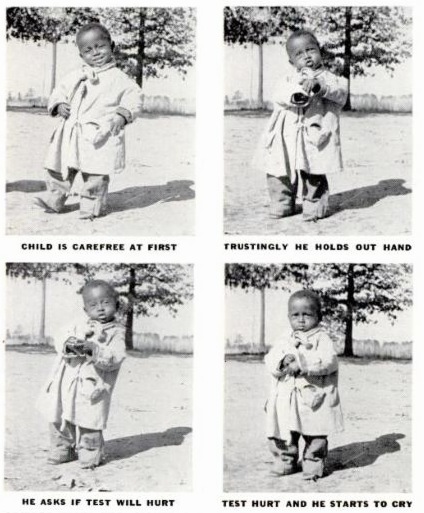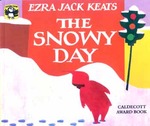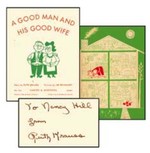The Jewish Museum exhibition commemorating the work of Ezra Jack Keats is open, trying to get a jump on the 50th anniversary of The Snowy Day. Which is next year.
The NY Times article ends with a very touching quote from Keats, who was Jewish, not Black, and who never married or had kids:
Sometimes, I would feel that life was one vast desert, and I could pick up a stone and water would spurt out. I wonder what ripples of laughter and joy and love are buried -- to surface one day just as the meaning of Peter's pictures had finally emerged for me.And somewhere in the show is this little set of photos, a clipping from a 1940 issue of LIFE Magazine, which served as the model for Peter in The Snowy Day. Deborah Pope, director of the Ezra Jack Keats Foundation said, "The child was black, but as far as Ezra was concerned, he was Ezra." The Times calls the clipping and the various notebooks and sketches displayed alongside it "some of Keats' research."

they go top L, bottom L, top R, bottom R
Which kind of makes it sound like Keats researched the character of his first solo children's book, and found the photos. Which, really? Did people keep 20-year-old copies of LIFE around? Did they regularly browse them for children's book character ideas? I highly doubt it. I know one thing, though, Keats didn't Google it. I just did, and I can't imagine how Keats ever could have found the pictures.
They turn out not to be part of any actual LIFE story, but were sent in for the "Pictures to the Editors" section at the back of the magazine. The first set of photos that week featured a pair of boxing chipmunks. In an accompanying letter, Edna Cain Daniel of the Quitman (GA) Free Press wrote,
This little Negro boy was at school in Liberty County, Ga. the day a State Health Officer and Health Nurse came to take blood tests of the schoolchildren for a malaria survey. His reaction to the blood test is shown in the pictures.I'm going to guess that Keats clipped these pictures, and carried them around for twenty years. Which, on one level, are exactly the kind of adorable pix an aspiring children's book illustrator would stockpile. But on another level, somehow feels a little odd or sad, especially given Deborah Pope's comment of Keats identifying himself with the kid.
And that's all before looking at the photos themselves. Which, I guess pictures of cute little Negro children were a thing people staged, took, passed around, and collected back then?
For her part, Mrs. Edna Cain Daniel of the Quitman Free Press seems to have been fairly respectable, even relatively progressive for her day and circumstances. And she was something of a favorite among the Time-Life set. She turns out to have assumed sole responsibility as Editor and Publisher of the Press [circulation: 2,000] in 1939, after the death of her husband/colleague Royal Daniel. Before moving to Quitman, Mr. Daniel had been a reporter at the Atlanta Journal. In 1899, early in his career, Daniel had provided critical coverage of the horrific torture and lynching of Sam Hose, an African American laborer, which garnered national and international condemnation.
Coincidentally, a lawyer from Breckenridge, CO named Royal "Scoop" Daniel III was just arrested this week after a 5-year disappearance following a fraud scandal; Daniel had been accused of taking over $1 million in real estate client funds to pay his own debts. If Daniel the 65-yo fugitive lawyer is related, he wasn't born until several years after his grandmother snapped the photos. None of this really has anything to do with Ezra Jack Keats, but it seems more interesting than babbling on about the exhibit's cheesy-looking dioramas.
OTOH UPDATE: DT reader and smart person Marjorie emails to say that the EJK show is, in fact, "endlessly fascinating."
Homage To A Picture Book Rebel [nyt]
LIFE Magazine, May 13, 1940 [life via google books]



Snowy Day is a favorite in our house. Funny because we never really think about Peter being black or Keats being Jewish. Certainly never think about kids in GA getting blood tests. It must be my simple-mindedness but the most striking thing to me is Peter's pointy hooded snowsuit. What was the inspiration for that? Was that the style in 1960's NY? Was it the style in 1940's GA? We are planning to catch this exhibit at the Jewish Museum so maybe I'll find my answers there.